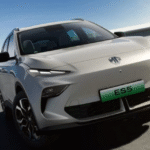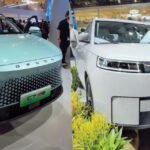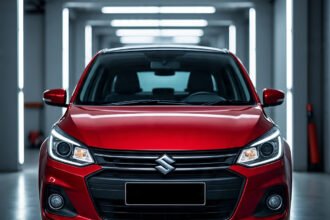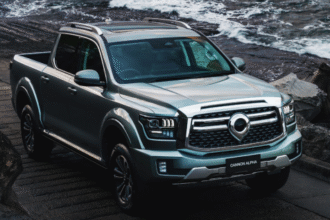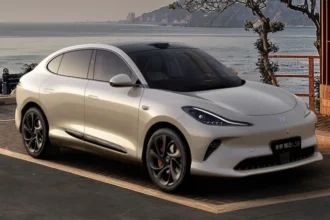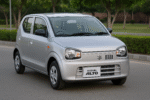In today’s fast-evolving world, transportation is no longer just about moving from one place to another. It’s also about doing so efficiently, safely, and with minimal impact on the environment. One of the most revolutionary developments in this area has been the introduction of High-speed trains in Pakistan These trains have transformed how millions commute across countries.
From Japan’s iconic Shinkansen to France’s TGV and China’s massive rail network, high-speed trains have reduced travel times dramatically. More importantly, they have redefined convenience and sustainability in public transport.
Introduction and Evolution of High-Speed Trains
High-speed trains are advanced rail systems built to operate faster than traditional trains—typically over 250 km/h (155 mph). They run on specially designed tracks and use modern technology to ensure speed, comfort, and safety.
The concept began in Japan in the late 1950s. By 1964, the country had launched the world’s first bullet train, the Shinkansen. Its success inspired many European nations and, later, China to invest heavily in similar infrastructure.
Key Features of High-Speed Trains
- Speed and Time Efficiency
High-speed trains cover long distances in much less time. For instance, a journey that takes 8 hours by regular train may take just 3 hours with high-speed service. - Comfort and Modern Amenities
These trains are built for comfort. They offer spacious seating, air conditioning, noise reduction, Wi-Fi, and a smoother ride with minimal vibration. - Environmentally Friendly
Most of these trains run on electricity rather than diesel. As a result, they emit fewer carbon emissions, making them a green alternative to air and road transport. - Safety and Reliability
With advanced signaling systems and separate tracks, high-speed trains are extremely safe. Moreover, they are rarely delayed, which enhances reliability.
Leading High-Speed Rail Networks Around the World
Japan:
The Shinkansen is known for its punctuality and speed, operating at up to 320 km/h. Japan’s strong focus on innovation ensures smooth travel with minimal delays.
China:
China has the world’s largest high-speed rail system and aims to expand it to 50,000 km by 2025. Trains like the Fuxing Hao reach speeds of 350 km/h and connect remote areas efficiently.
France:
France’s TGV trains are fast and comfortable. Impressively, one TGV train once hit 574.8 km/h under test conditions, setting a global record.
Germany and Italy:
Germany’s ICE and Italy’s Frecciarossa trains are other top examples. These systems provide high-speed service across major cities in Europe.
The Case for High-Speed Trains in Pakistan
Pakistan’s rail system is historically important but remains outdated. Most trains still use diesel engines, and their speeds rarely exceed 120 km/h. Delays and poor maintenance are frequent issues.
However, introducing high-speed trains in Pakistan is not an impossible dream. With strategic planning and global partnerships, it could become a reality in the future.
Potential Benefits of High-Speed Trains in Pakistan
- Economic Growth
Better connectivity between cities would support trade, tourism, and education. Businesses could expand operations across regions due to reduced travel time. - Reduced Road Traffic and Accidents
Reliable rail service would take pressure off highways. Consequently, there would be fewer traffic jams and road accidents. - Environmental Improvement
Switching to electric trains can cut fossil fuel use and emissions. In turn, this would help improve air quality and fight climate change. - Employment Generation
Such a large-scale project would create jobs in construction, operations, and other related sectors.
Challenges and Roadblocks
- Lack of Infrastructure
Dedicated tracks and modern stations are essential for high-speed trains. Unfortunately, these are missing in the current railway setup. - Financial Constraints
Such projects require huge investment, often in the billions. For a developing country like Pakistan, this remains a major challenge. - Skilled Workforce
A modern rail network needs engineers and technicians with specialized training. Currently, Pakistan lacks such human resources in large numbers. - Political Instability
Infrastructure projects need long-term support. However, changing governments and shifting priorities often cause delays and cancellations.
Possible Solutions and Suggestions
- Public-Private Partnerships (PPP)
Pakistan can reduce financial pressure by involving private investors and global partners through joint ventures. - Start with Short Routes
A trial project—like Lahore to Rawalpindi or Karachi to Hyderabad—would be ideal. It can provide learning experience and showcase viability. - Leverage Chinese Expertise
China can offer valuable help through the CPEC framework. Their knowledge in building and running high-speed trains is unmatched. - Railway Reforms First
Modernizing the current system should be a priority. Upgrading tracks and safety features will lay the groundwork for future improvements.
Conclusion
High-speed trains are more than just a transportation upgrade. They reflect a nation’s ambition for progress, sustainability, and efficient mobility. As other countries explore maglev and hyperloop technologies, Pakistan still struggles with basic upgrades.
Nevertheless, with clear vision and strong partnerships, high-speed rail in Pakistan is an achievable goal. It’s time to go beyond outdated systems and build a future that connects people, empowers the economy, and supports sustainable growth—at 300 kilometers per hour.

More Article
MG ES5 EV Coming to Pakistan – International Features
GWM Tank 500 PHEV Arriving Pakistan – International Specs & Features
Capital Smart Motors Signs MoU with Geely to Launch NEVs in Pakistan
Ask your anything

